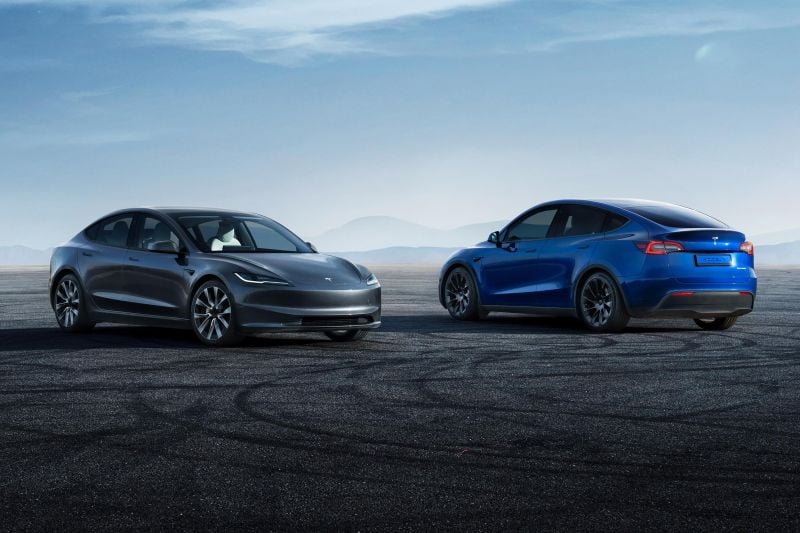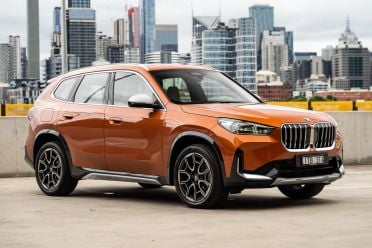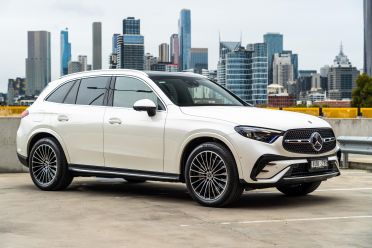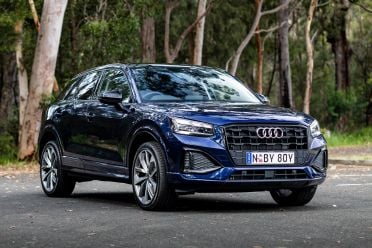BMW is still the leader among legacy luxury brands, growing its sales while rival brands are going backwards.
Whether you consider Tesla a premium or luxury brand or not, we’ve included it here for context. Its only vehicles in Australia, the Model 3 and Model Y, sit at roughly the same price point as more affordable BMWs like the 1 Series.
For the sake of brevity, however, we have omitted ultra-luxury brands like Bentley and Rolls-Royce.
Compared to full-year 2023 results, the brands are sitting in the same positions for the most part.
However, Jaguar has leapt two spots on this chart as almost its entire petrol-powered lineup has seen a sales boost… just in time for all of these models to go out of production.
Tesla: 23,116 sales
Tesla may still have Australia’s two best-selling electric vehicles (EVs) by a comfortable margin, but its sales in the first half of 2024 were down 9.6 per cent on the same period last year.

The Model 3 was down 8.4 per cent despite the arrival earlier this year of a significant facelift for the model, while the Model Y was down 10.6 per cent.
BMW: 13,641 sales
BMW was one of the few brands on this list to improve on its standing in the first half of 2023.

Its sales were up 9.1 per cent, driven by significant gains among its smaller, more affordable models.
The recently redesigned X1 was up 43.4 per cent to 2255 sales, overtaking the X3 as the brand’s best-seller.
Its X2 coupe SUV sibling was up 217.9 per cent to 728 sales as the new model comes on stream, while the 2 Series coupe range is up 85.6 per cent to 900 sales.
Not every small BMW was up, however, with the 1 Series down 49.4 per cent to 530 sales ahead of a next-generation model, while the 2 Series Gran Coupe was down 40.9 per cent to 364 sales.
Note that BMW splits some electric models out from their combustion-powered counterparts (e.g. i7 and 7 Series) and combines others (X1 and iX1).
The electric i4 has climbed the charts to become BMW’s fifth best-selling vehicle, behind only the X1, X3, X5 and 3 Series. Not only that, but the i4 outsells the related petrol-powered 4 Series Gran Coupe by around three-to-one.
| Model | H1 sales | YTD change |
|---|---|---|
| X1 | 2255 | +43.4% |
| X3 | 1884 | -7.9% |
| X5 | 1604 | -10.7% |
| 3 Series | 1511 | -6.8% |
| i4 | 1177 | – |
| 2 Series Coupe | 900 | +85.6% |
| X2 | 728 | +217.9% |
| X7 | 566 | +9.9% |
| 1 Series | 530 | -49.4% |
| X6 | 403 | +63.2% |
| 4 Series two-door | 383 | -1.5% |
| X4 | 374 | -8.6% |
| 2 Series Gran Coupe | 364 | -40.9% |
| 5 Series | 350 | +75.9% |
| iX | 255 | -50.7% |
| 4 Series Gran Coupe | 168 | -67.3% |
| XM | 70 | +118.8% |
| Z4 | 43 | +10.3% |
| i7 | 23 | -23.3% |
| 7 Series | 21 | -57.1% |
| 8 Series two-door | 19 | -34.5% |
| 8 Series Gran Coupe | 10 | -63.0% |
| 6 Series GT | 3 | – |
Mercedes-Benz: 9613 sales
Even if you include the 2345 vehicles sold by the Mercedes-Benz Vans division, the three-pointed star brand falls short of its Bavarian rival.

Its sales were down 24.1 per cent on the same period last year.
Most models were down on the first half of 2023, with exceptions being the GLA (1011 sales, up 9.8 per cent) and its electric EQA sibling (624 sales, up 58.8 per cent).
Also up were the more niche G-Class (up 86.7 per cent), SL (up 142.9 per cent), and Mercedes-AMG GT 4-Door Coupe (up 250 per cent). Otherwise, it’s declines across the board.
| Model | H1 sales | YTD change |
|---|---|---|
| GLC wagon | 1345 | -4.1% |
| A-Class | 1164 | -10.8% |
| C-Class | 1115 | -39.4% |
| GLA | 1011 | +9.8% |
| GLE wagon | 746 | -51.9% |
| GLC Coupe | 707 | -5.2% |
| EQA | 624 | +58.8% |
| GLB | 553 | -54.8% |
| EQE SUV | 516 | – |
| CLA | 438 | -39.4% |
| G-Class | 224 | +86.7% |
| GLE Coupe | 207 | -50.7% |
| GLS | 185 | -56.3% |
| EQB | 152 | -50.5% |
| E-Class | 151 | -24.1% |
| CLE | 130 | – |
| EQE | 91 | -63.0% |
| EQS SUV | 68 | – |
| EQC | 66 | -57.1% |
| C-Class two-door | 39 | -90.7% |
| SL | 34 | +142.9% |
| E-Class two-door | 17 | -83.8% |
| S-Class | 15 | -72.7% |
| AMG GT 4-Door Coupe | 7 | +250.0% |
| EQS | 6 | -57.1% |
| B-Class | 2 | -97.5% |
Audi: 8183 sales
Audi sales are down 12.4 per cent on the first half of 2023.

The Q3 and A3, among Audi’s most affordable models, remain its strongest sellers and have seen sales growth this year.
The A3 has even cemented its lead over the related Volkswagen Golf in the sales race, and has become the most popular premium-brand small car.
The popular Q5, however, is down 42.3 per cent this year as it nears the end of its lifecycle. Conversely, the ageing Q2 has actually seen a boost in its twilight years and is up 20.4 per cent.
The Q7 is down 58.7 per cent, though an updated model is arriving in showrooms soon; the A4 is also down considerably, though it’s nearing the end of its lifecycle.
| Model | H1 sales | YTD change |
|---|---|---|
| Q3 | 2816 | +12.5% |
| A3 | 1700 | +21.2% |
| Q5 | 1386 | -42.3% |
| Q2 | 609 | +20.4% |
| Q7 | 363 | -58.7% |
| A4 | 263 | -38.0% |
| A5 Sportback | 260 | +7.4% |
| Q8 | 228 | +3.2% |
| A1 | 147 | -32.9% |
| Q8 e-tron | 112 | +51.4% |
| A6 | 110 | -0.9% |
| e-tron GT | 66 | -66.8% |
| A5 two-door | 55 | -9.8% |
| TT | 45 | -10.0% |
| A7 | 16 | -48.4% |
| A8 | 6 | -25.0% |
| Q4 e-tron | 1 | – |
Lexus: 6286 sales
Lexus had its best-ever sales year in Australia in 2023, with its 15,192 sales representing a 114.3 per cent on the prior year and eclipsing its previous high watermark of 9612 sales in 2019.



